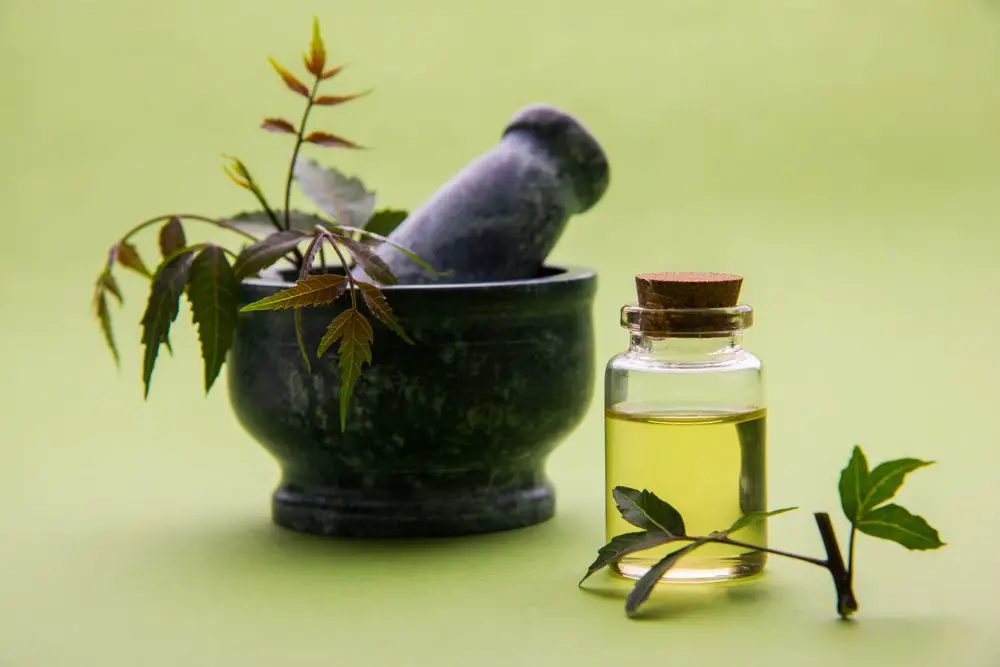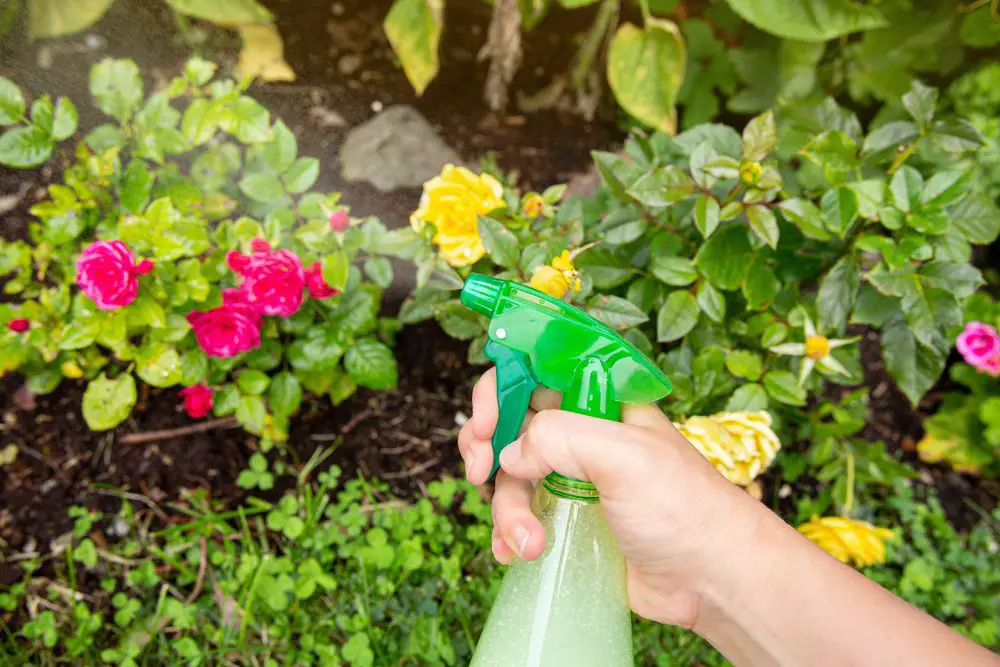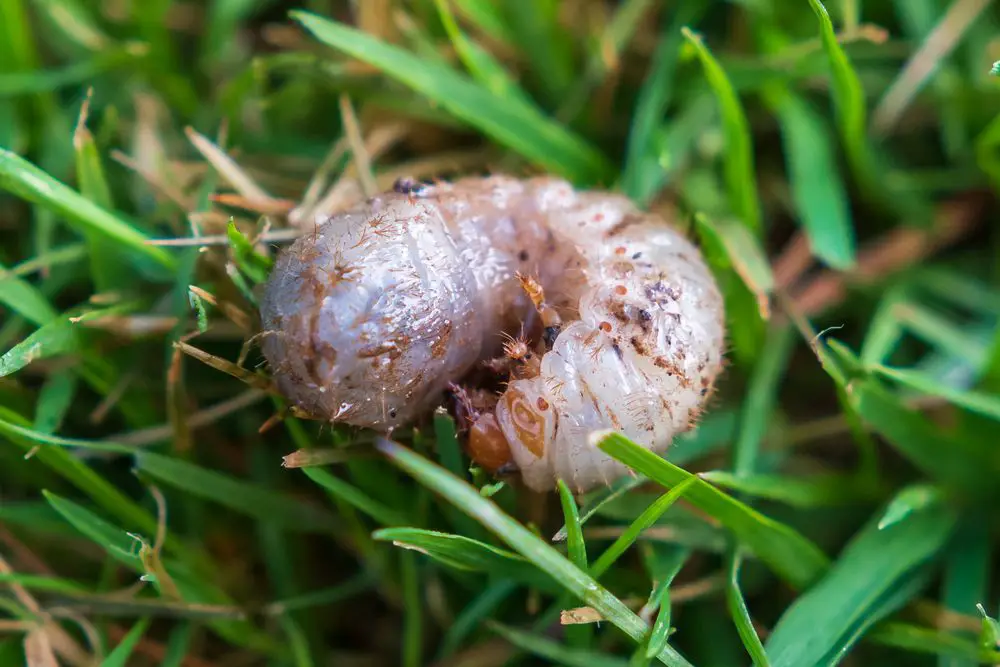Do you notice some areas of your lawn turning brown? Chances are grub worms may be invading your lawn. These pests look unpleasant but there are many ways you can get rid of them on your lawn.
Till the Soil, apply pesticides, beneficial nematodes, milky spore, diatomaceous earth. use neem oil, attract more birds to your lawn, use dish soap, garlic grub killer spray, garlic, lemon juice with liquid dish detergent, or borax.
Getting rid of these pests is a matter of how to detect their presence and applying treatment. There are some easy fixes on how to get rid of grub worms on your lawn and prevent them from going back the next season.
How to Get Rid of Grub Worms on your Lawns
There are chemical and natural options you can use to get rid of grub worms.
1. Apply Pesticides
Pesticides that contain carbaryl, imidacloprid, or bifenthrin are extremely effective in getting rid of active grub worms in your established lawn.
Liquid grab killers should be mixed with water according to label instructions. The pesticide should be sprayed thoroughly on the infected areas to make sure it goes deep into the soil.
You can also use a garden spreader to apply granular pesticides mixed with water into the soil and kill the grubs. Water your lawn after applying the pesticide to ensure it gets down into the soil and kills the grubs.
2. Till the Soil
Frequent cultivation of the soil in your yard will kill adult beetles before they have the chance to lay eggs.
3. Apply Beneficial Nematodes
Beneficial Nematodes (heterorhabditis bacteriophora) are microscopic roundworms naturally found in the soil.
Nematodes are tiny worms that release bacteria into the soil. Spraying them on the dead patches of grass allows the worms to move in the moist soil underneath your turf.
These worms release pathogens that kill grubs.
Beneficial nematodes are available in liquid and solid forms and can be purchased in garden centers. They can get rid of grubs in your lawn within a few days.
Choose nematodes that work effectively against grub worms. Mix nematodes with water and place the mixture on a garden sprayer. Spray it on your lawn to keep it moist.
It is best to spray nematodes on your grub-infested lawn in the evening because heat and light kill it. Water your lawn after applying nematodes. Reapply the nematodes mixture after two weeks to completely get rid of grubs on your lawn.
4. Apply Milky Spore
Milky Spore is a bacterium (Bacillus papillae) that you can use to get rid of grub worms. It will only target the grubs in your lawn and will not touch the other beneficial insects in your lawn.
Milky Spore is safe for the environment. Once applied to the affected areas in your lawn, it will poison and kill the grubs as they feed on your grass.
When the grubs die, they will decompose. Additional spores will then be released into the soil and protect your lawn from further grub infestation.
Milky spore comes in dust form. Apply one tablespoon of the dust on the affected area and water the area. You will not get immediate results because it takes time for the “disease”(milky spore is a disease to grubs) to develop and be effective.
Once the Milky spore takes effect, it can protect your lawn from grubs for a very long time. Milky spore though only targets the Japanese beetle grub worms.
If you have May beetles and June bugs, you are better off using other natural methods of getting rid of grubs on your lawn.
5. Diatomaceous Earth
Diatomaceous earth is a natural insecticide. It kills insects by targeting their exoskeletons causing them to dehydrate.
The diatom (tiny creatures in the ocean with hard shells) shells are covered with very sharp protrusions. These protrusions are what makes them precious for pest control, especially for grubs.
When the tiny particles diatomaceous earth gets into contact with grubs, they cling and pierce through the wax-like coating of the insect preventing them from drying out.
The sharp shells of the diatom create holes in the body of the insect allowing fluid to leak and thereby causing the grub to dehydrate and die.
Diatomaceous earth can also come in the form of a fine and powdery material derived from crushed fossilized shells that look like sunflower seeds.
You can sprinkle some of the diatomaceous earth powder around the areas affected by grub worms.
Be careful, though because diatomaceous earth can also kill other beneficial insects and pests in your lawn, so it is advisable to use it sparingly. It can also be harmful to humans so always wear a mask and gardening gloves when handling this natural insecticide.
6. Use Neem Oil

Neem oil is a natural pesticide that contains insecticidal properties. It comes from the seeds of the neem tree. It can be yellow or brown. It has a bitter taste and a sulfur or garlic smell.
Neem oil has, for hundreds of years, been used to control diseases and pests.
Neem oil works as a repellent against lawn grubs. It can inhibit egg-laying, feeding, and growth of grubs.
It works by blocking the hormone of the grubs keeping them from working properly. Disrupting the proper function of their hormones, makes the grubs forget to mate, eat, and stop laying eggs in your garden.
It breaks the life cycle of grubs and stops the damage they can cause to your lawn. Mix neem oil with water and spray the affected areas of your lawn. Targeting the larvae of the grub worms makes sure you can kill them.
7. Attract More Birds to your Lawn
Birds circling your home are one of the early signs there are grub worms on your lawn. House Wren is a bird that feeds on grubs.
You can get rid of grubs by attracting more birds to your lawn. You can leave extra food for birds or build birdhouses around your yard and House Wrens will start flying around your lawn with grubs in their claws.
While attracting more birds to your lawn is an effective way of getting rid of grub worms, attracting too many birds can cause severe damage. The birds can dig up your turf and fight over food. Birds are not also effective in stopping large grub infestations.
8. Use Dish Soap

A mixture of one tablespoon liquid dish soap and a quarter of water is a great homemade grub killer. The mixture can also keep grub worms from attacking your lawn. Spray the mixture directly onto the grubs.
The dish soap and water mixture effectively suffocate the larvae of the grubs and kills them before they can indulge on your lawn.
The soap mixture suffocates grubs by disrupting their cellular membranes and removing the protective waxes covering them resulting in suffocation.
9. Garlic Grub Killer Spray
You can chop some garlic and mix them with mineral oil to create a strong solution that can get rid of the of grub worms and kill their larvae.
Here is a simple recipe for a Garlic Grub Killer Spray:
- 2 cloves of garlic, chopped
- 1 tablespoon mineral oil
- 1 tablespoon liquid dish soap
- 1-quart water, warm
Mix the chopped garlic and mineral oil in a small container. Allow the solution to sit in the freezer overnight.
The following day, add warm water and liquid dish soap to the solution. Thoroughly mix the solution. Pour the solution onto a spray bottle. Immediately spray the solution into the area affected by grub worms.
10. Use Garlic
Grub worms do not like the scent of garlic. You can spread crushed garlic cloves around your lawn and they will deter larvae and adults from setting foot on your lawn.
11. Use Lemon Juice with Liquid Dish Detergent
The Lemon Juice / Liquid Dish Detergent DIY grub repellant spray is one of your many options that will get rid of grubs. This solution will also keep away adult beetles from your yard. Without adult beetles, there will be no eggs that will hatch into grubs.
- Lemon Juice, 2 cups
- Liquid Dish Detergent, 1 cup
- Water, 1/2 cup
- Mouthwash, 1/ 2 cup
Mix all the ingredients in a spray bottle. Shake the bottle well. Spray the grub repellant solution on your lawn.
12. Use Borax
Borax is a powdery substance also known as sodium borate, disodium tetraborate, or tetraborate. It is a widely used household cleaner that is a combination of sodium, boron, and oxygen.
Borax is a favorite of gardeners to get rid of grub worms because it is inexpensive, safe, and easy to find.
Borax kills grubs by ridding its body of moisture. Here is how to make a Borax grub worm killer.
- Borax, 4 tablespoons
- Warm Water, 2 Quarts
- Spray Bottle
Stir borax and warm water in a container. Pour the solution into a garden sprayer and shake it well. Sprinkle water over the areas infested with grubs. The following morning, spray the borax solution over the area. Spray the solution 4 to 5 times a week.
What are Grub Worms?
Grub worms are the larval stage of many insects, most of them coming from the beetle family. This is not surprising because most insects belong to the beetle family.
The Japanese beetle and European chafer larvae are the biggest grub worm beetle and the most notorious for destroying lawns in North America. They are usually 3/4 to 1 1/2-inches long and have white or grey bodies and brownish heads.
Where do grub worms come from? To know the life cycle of grubs, you need to understand the life cycle of scarab beetles.
- Adult beetles lay eggs in the soil about 8 inches deep.
- The grubs / larvae hatch from the eggs after about 2-3 weeks.
- The grubs start to consume roots and decomposed vegetation all through summer.
- The grubs bury themselves deep into the soil (about 1.5 meters deep) during fall in preparation for winter.
- The grubs remain dormant beneath the soil until the following spring.
- The young grubs again penetrate deep into the ground the next autumn to live there through the winter.
- They return the following spring to feed themselves.
- They become fully grown in the late spring.
- The larvae move on to the pupa stage.
- The adult grubs emerge after a few weeks and live in the soil throughout winter.
- The following year (May or June), the adult grub emerges from the ground and starts a new life cycle.
Grub worms live in the soil on your lawn eating grass roots and leaving your yard brown and unattractive.
These pests can damage your lawn because they can attract unwelcome wildlife that feeds on them. They dig up patches of grass to search for these pests.
The unsightly brown spots on your yard contain hundreds of grub worms that are having the time of their life chewing the grassroots of your beautiful lawn.
It may be impossible to get rid of all the grub worms on your lawn, but you can diminish about 80% of their population with the remedies listed below.
Remember that failing to get rid of grub worms on time will allow them to develop into pupae and eventually into full-grown beetles.
These beetles will eat not only your lawn grass but other foliage in your yard as well, causing even more damage.
What Attracts Grub Worms to your Lawn?
Grub worms come from beetles. Beetles lay their eggs in the soil and hatch as grubs. Grubs feed on roots and grass. They then mature to become beetles and lay more eggs.
Knowing what attracts grubs to your lawn is to understand what attracts beetles to your lawn:
- Plant roots
- Short grass
- Flowers
- Roses and rose bushes
- Edible garden plants
- Garden plants
- Vegetables
- Fruits
- Ornamental trees and plants
- Window lights
- Porch lights
- Garden lights
When you keep the beetles away from your yard, you may avoid having grubs in your garden.
Signs of Grub Worms in your Yard
Knowing how to detect the presence of grub worms is the first step to getting rid of them.
Healthy gardens can typically endure small populations of grub worms. But, as their number grows, they will be creating more pressing issues.
Here are signs you need to look out for to detect grub worms on your lawn:
Increased Bird Activity
Grubs are delicious bird snacks. Birds, raccoons, and moles feed on insects and worms on your lawn. If you notice an increased number of these predators digging your lawn, it could be a sign there are grubs on your lawn.
Brown Patches
Be wary of brown patches on your lawn, especially after the hot summer temperatures and fertilizing. Other than dead or brown patches, you will also notice the grass starting to turn yellow, thin out, and die.
Before making a final verdict, make sure the brown patches on your lawn are due to grub infestation. Brown patches may also look like dying grass. Lift the turf and check if there are grubs underneath. Finding over 5 grubs means there is grub worm infestation.
Milky-white, C-shaped worms
Grub infestation is manifested by the presence of milky-white, C-shaped worms in the soil. A few of these pests should not pose any danger but a large number of them can cause severe damage to your beautiful lawn.
A Soft Turf
Severe grub infestation allows the turf to be easily lifted and rolled similar to a carpet. When you lift the turf, you will see the grubs underneath, especially at the outer rim of the brown patches on your lawn.
Some lush lawns continue to grow when grub worms are actively feeding on them. This makes it difficult to determine the presence of grubs until later.
Old, dying, or the growth of new grass also make it difficult to locate grubs on your lawn.
If you are vigilant enough and know what you are looking for, you should not find it too difficult to detect the presence of grubs in your lawn and find the best grub-killer method.
The Best Time to Get Rid of Grub Worms
Once you have detected the presence of grub worms in your yard, you need to determine when to start getting rid of them.
Grubs are more rampant during the late summer and early fall (August and September). During this time, they are actively feeding on the grassroots underneath the soil.
Late summer or early fall, therefore, is also the best time to get rid of grubs. This is the time the grubs are small and close to the surface of the soil.
Grubs are not that vulnerable to treatment during spring. This is the time they are no longer feeding on your turf and are too large. Spring rains also tend to wash away any treatment.
Final Thoughts on Ways to Get Rid of Grub Worms on your Lawn
Using any of the tips and homemade grub worm repellent recipes as part of your lawn care and maintenance will help get rid of grub worms in your garden.
It is important to note that you should take precautions when using any of the materials mentioned above. Always wear protective gear including face masks. goggles, and gardening gloves.
It is also important that you test spray the grub worm repellents on a small portion of the affected area. This will ensure the repellents do not harm your lawn or vegetation.
Grub worms will make your lawn ugly because of the severe damage they can cause. Luckily, there are simple remedies to completely get rid of them.

